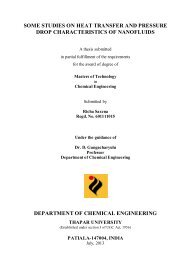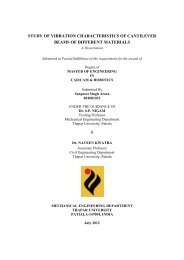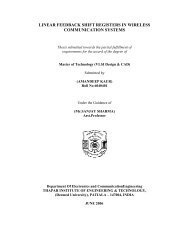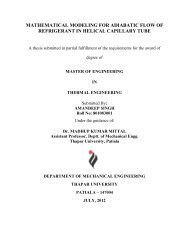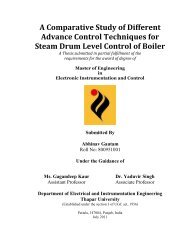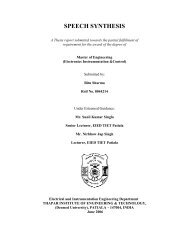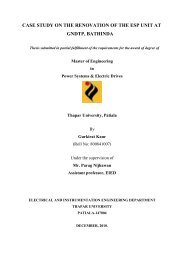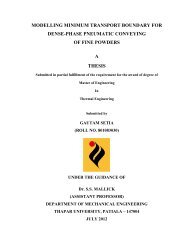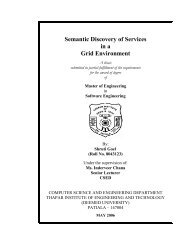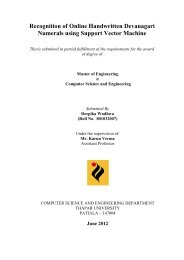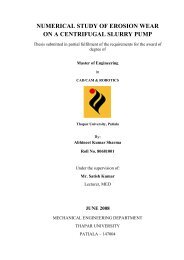from indigenous fermented foods and human gut ... - Thapar University
from indigenous fermented foods and human gut ... - Thapar University
from indigenous fermented foods and human gut ... - Thapar University
You also want an ePaper? Increase the reach of your titles
YUMPU automatically turns print PDFs into web optimized ePapers that Google loves.
4.7 Probiotic Attributes of Lactobacillus spp.<br />
4.7.1 Survival of Lactobacillus strains under acidic condition<br />
92<br />
Chapter IV: Results<br />
Different regions of the gastrointestinal tract have varying acid levels. Stomach <strong>and</strong><br />
the regions after stomach have the highest acidity <strong>and</strong> the pH of these areas may fall as low as<br />
pH 2.0. In order to be used as beneficial adjuncts, Lactobacillus must be able to survive these<br />
harsh conditions <strong>and</strong> colonise in the <strong>gut</strong> <strong>and</strong> therefore tolerant acidity.<br />
Survivals of six different Lactobacillus strains under acidic conditions (pH 2.0) are<br />
illustrated in Table 4.13. In general, the number of survivors of all the cultures during 3 h of<br />
incubation decreased under acidic conditions. The viable count log CFU/ml substantialially<br />
decreased at pH 2.0. LAM-1 showed the highest viability followed by LKH-2, Lamec-29<br />
LKH-5; LAM-2 <strong>and</strong> LKH-2 had also shown moderate activity at pH 2.0. As shown in Table<br />
4.13 at pH 2.0, LKH-3 had lowest viability.<br />
Table 4.13 Survival of Lactobacillus strains in MRS broth at pH 2.0 at 37°C, as<br />
determined by viable count.<br />
Viable count a (log10 CFU/ml)<br />
Strains 0 h 3 h % inhibition b<br />
LAM-1 9.23 ± 0.07 9.20 ± 0.39 - c<br />
LKH-2 9.71 ± 0.12 6.50 ± 0.47 33.0<br />
LKH-3 9.71 ± 0.08 3.96 ± 0.36 59.2<br />
LKH-5 9.76 ± 0.23 7.79 ± 0.81 20.1<br />
LAM-2 9.56 ± 0.03 7.23 ± 1.12 24.3<br />
Lamec-29 9.25 ± 0.08 7.96 ± 0.04 13.9<br />
a log mean counts of three trials (average ± s.d.); -cno inhibition; n = 3; observations comes <strong>from</strong> three replicate assays; data are represented<br />
as mean ± sd; b % inhibition = [(cfu/ml initial – cfu/ml final)/ cfu/ml initial] x 100.



